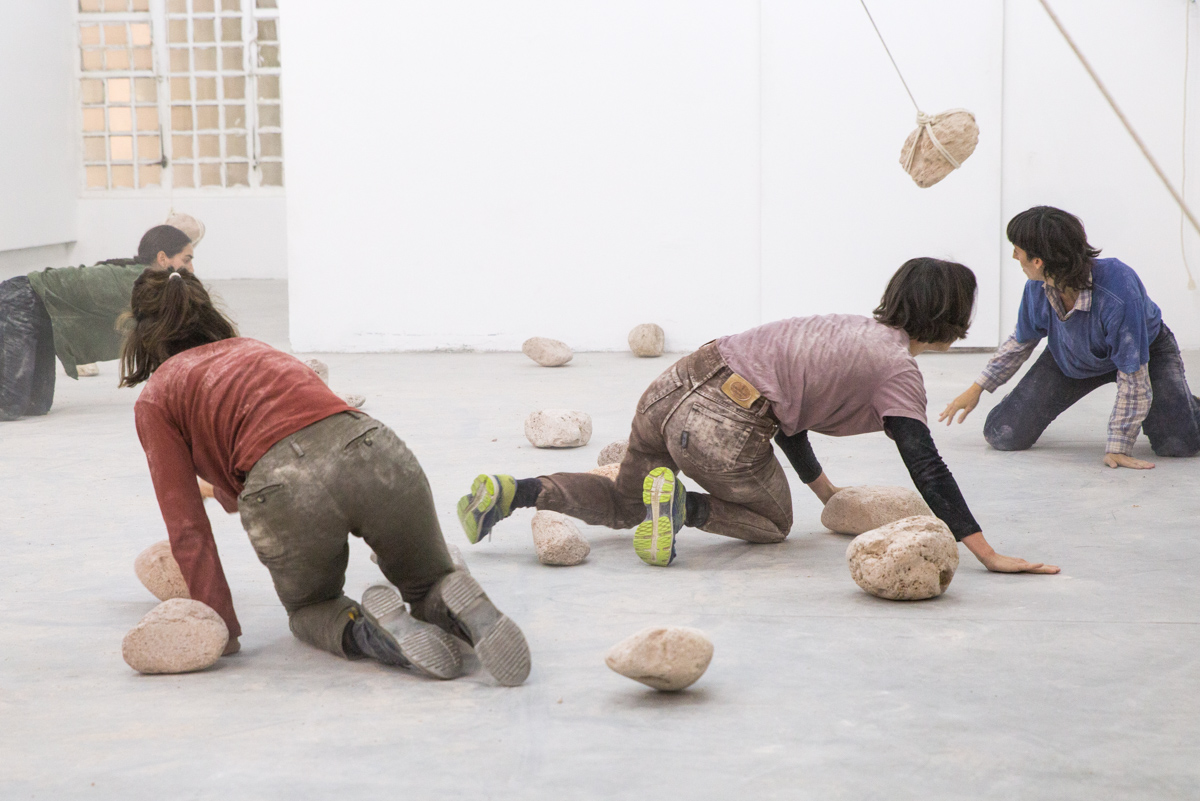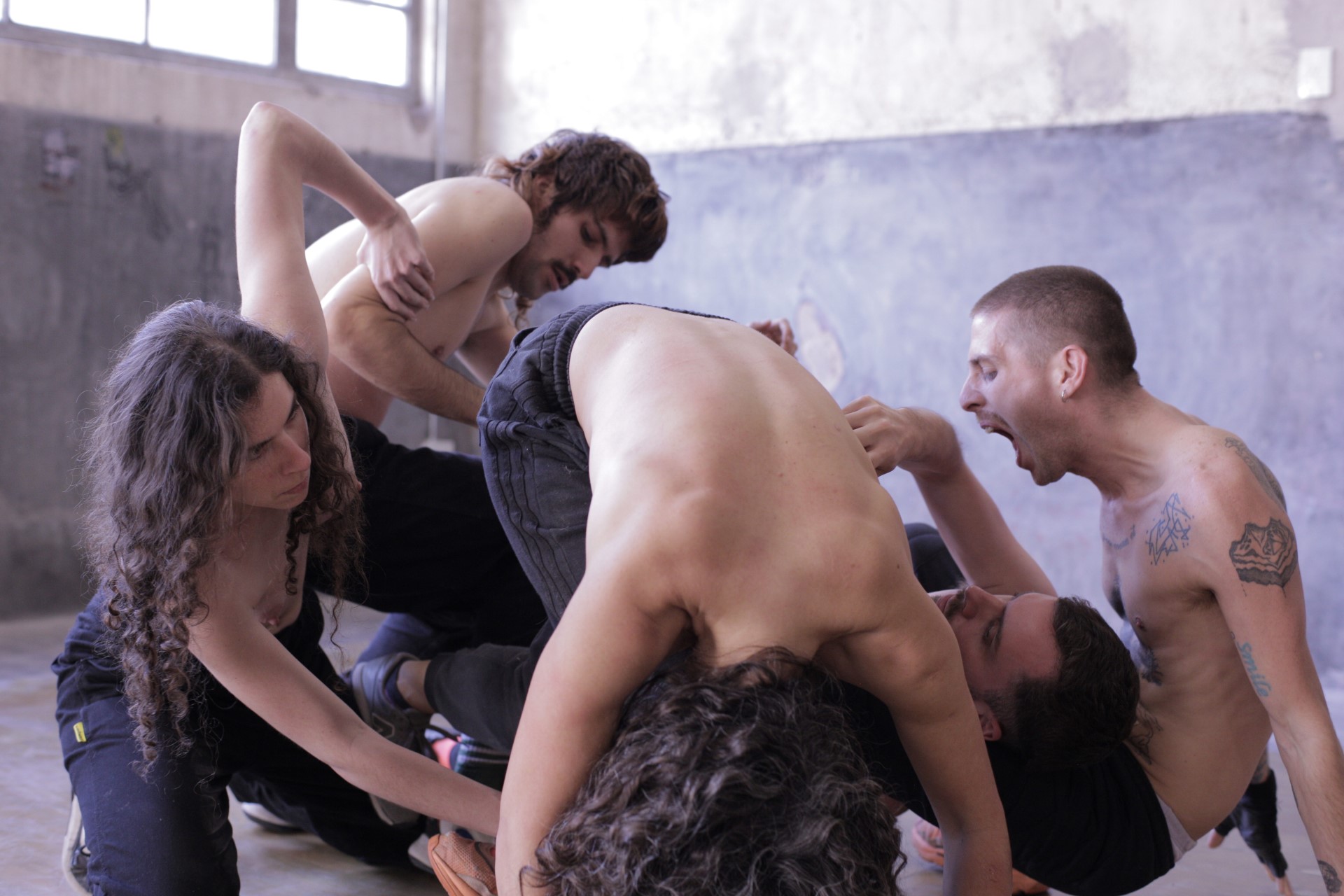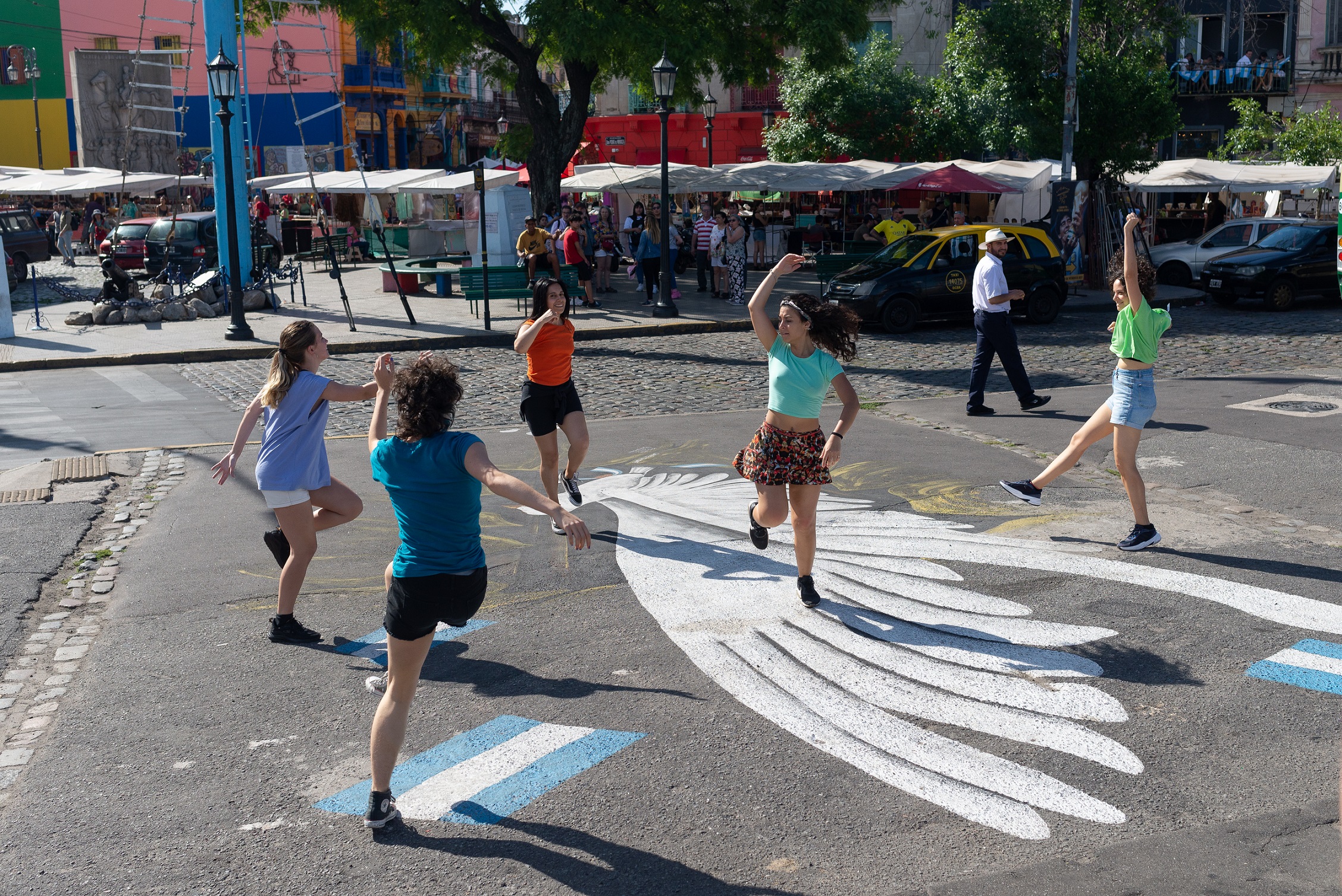Digging and Finding the Rhizome: Image as Multiplicity
04/28/2023
Gonzalo Lagos (Neuquén, Argentina, 1988) is a dance artist and independent curator whose work is developed at the intersection of the performative and visual arts from choreographic and performative approaches. From a rhizomatic sensibility, his projects seek to stimulate the desire to unfold reflections around the image in order to detonate a common conscience about what connects a collective with its environment.
Education
Training
My connection with art came from different curiosities that arose during my adolescence in Neuquén, my hometown. At that time, my interest in sports and the body in motion, as a reservoir of memories and experiences, brought me into contact with contemporary dance, where I began my first formal studies at the Escuela Experimental de Danza Contemporánea, a municipal institution of the city and a fundamental guide in the educational process of those years. At the same time, my interest and obsession for the universe of images and history allowed me to decide to settle in the city of Buenos Aires to get in touch with the study of Art History, through the formation of a career in Arts at the Faculty of Philosophy and Letters of the University of Buenos Aires.
It is impossible for me to separate these training processes because I was immediately able to establish a connection.
A constant laboratory practice allowed new drifts and observations around the relationship that I began to establish between the visual arts and performance and scenic practices. A link that accompanies the projects I have participated in—a connection that sustains my questions and motivations in this coming and going through the universe of images towards movement.
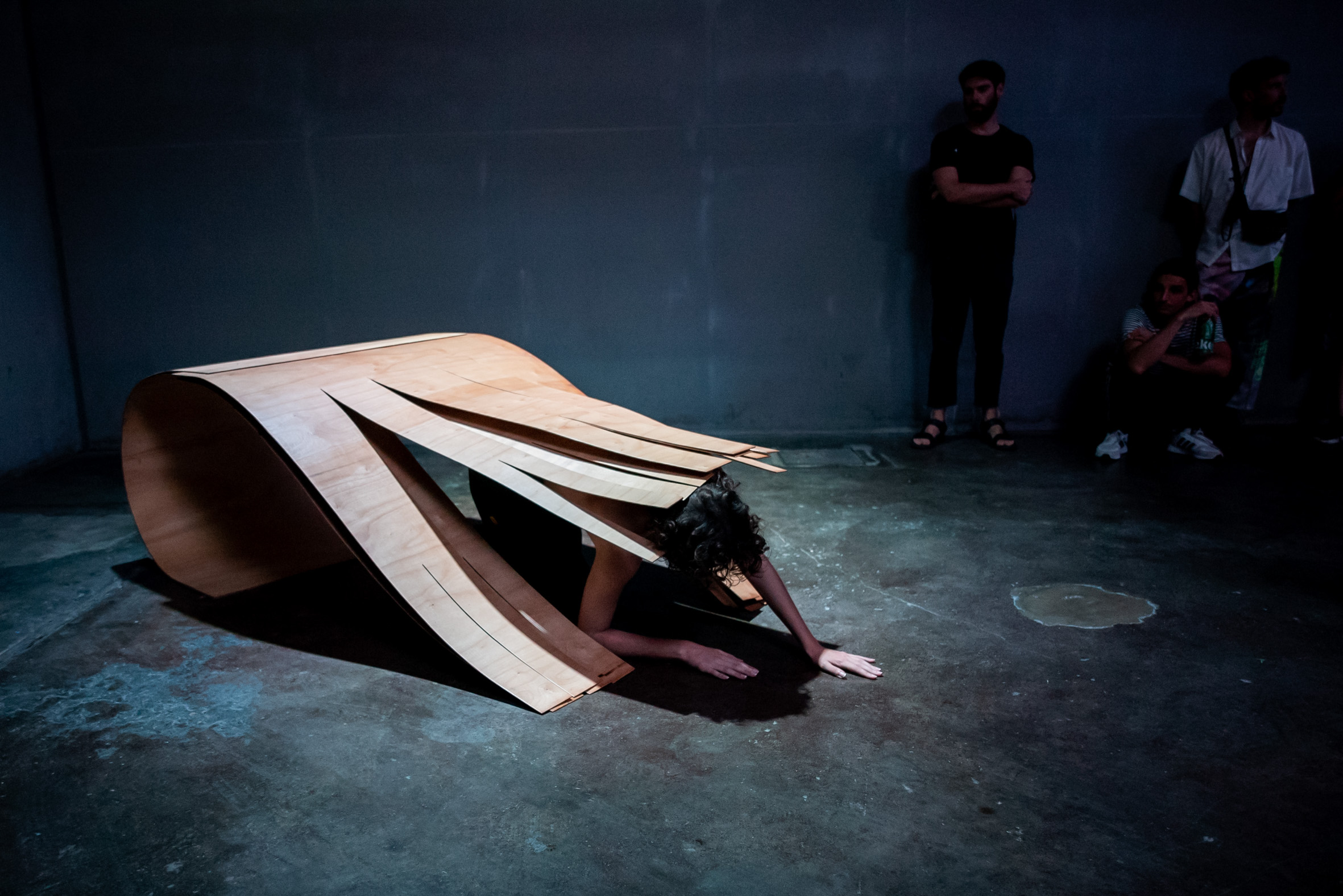
Teaching
I believe that pedagogical practice is the one that nurtures and forges the questions and investigations at the time of initiating projects and alliances with other artists and processes. It is in this feedback between practice and learning that I have been "digging" more and more through my own desire to discover beyond what I know, beyond what I see. In this sense, carving, as a foundational act to find other possibilities, manifests itself in my practice as an absolutely random, surprising pedagogical instance and motivation for constant updating. It is this performativity that allows me to think of learning instances that promote desire as an engine to enter pedagogy in a less formal, standardized and/or structured way.
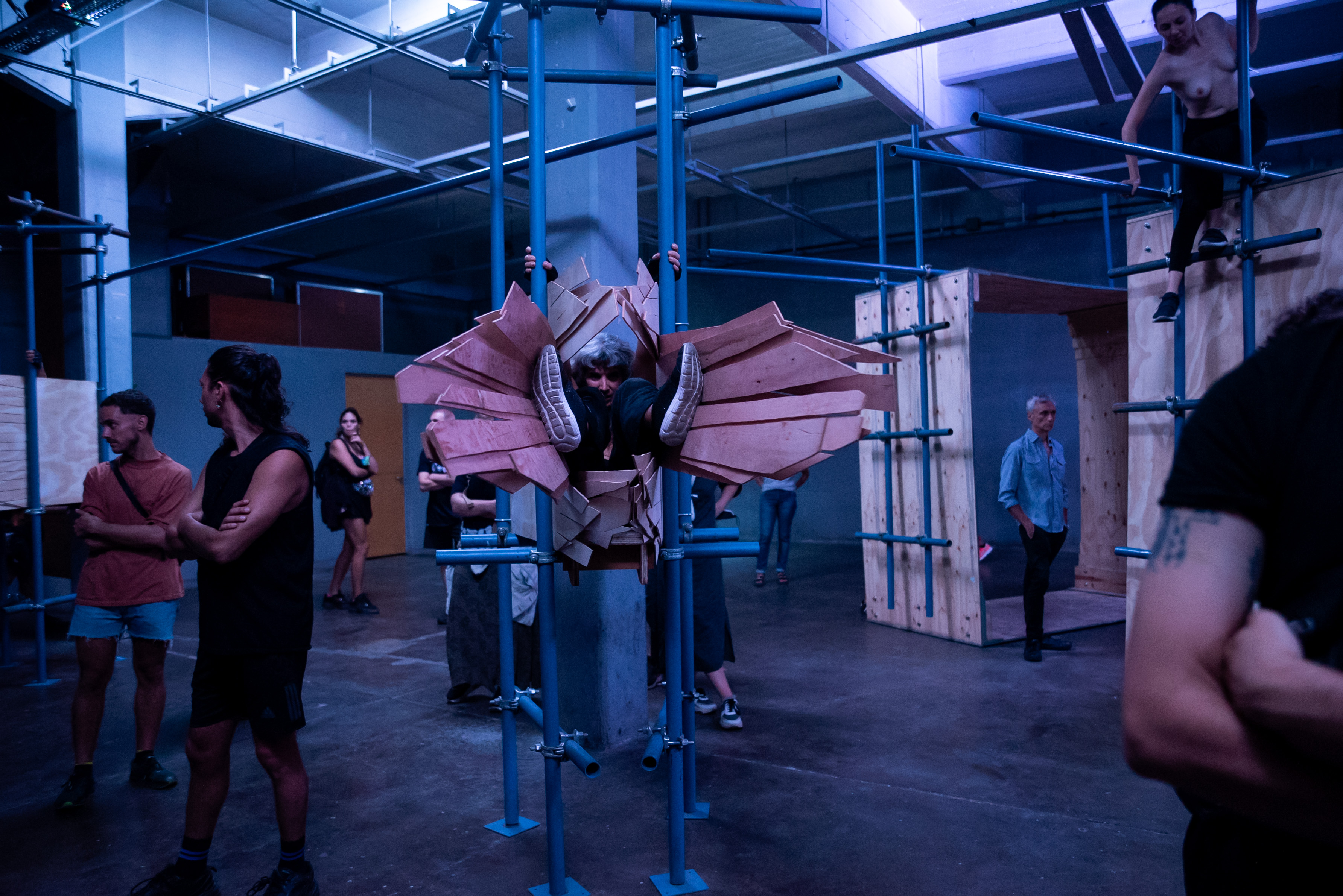

Learning
Nothing was more impacting and transcendent during my adolescence than to be in contact with Trisha Brown's production in my History of Dance classes at the Escuela de Danza Contemporánea de Neuquén. I believe that this milestone founded in my subjectivity the dimension of being able to establish practices outside the canon; a dimension that reminds us that experimentation is the best ally of the processes, to promote alternative paths, without the need to be novel, thus building multiple ways of approaching the same subject. Of course, this rupture, this new capacity to overflow the edges, was absorbed by different artistic-political manifestations that crossed the History of Art and Western Dance during the 20th century.
Processes
Beginnings
Starting a new project is always about putting intuition into practice as a specific kind of intelligence. I don't usually work on specific themes, but rather on rhizomatic relationships based on specific questions or material. A new project simply emerges from my relationship with others. From empowering inquiries, questions, and sensitive practices through communication and collective connection. From changing modes of thinking that are rooted and standardized in the specific context I happen to know or experience. A new project emerges even in scattered situations, in transit, in line at the bank, or at a party. I observe a lot to explore the interaction that moves my ideas and the fingers of my hands.
Strategies
The organization and methodology of working on my projects is very fluid. This is due to the diverse nature in which I move: from a curatorial project in the visual arts, to the artistic direction of a performing arts cycle, to the creation of site-specific works and projects. In this sense, I find it inevitable to ask myself whom it is directed to.
In a way, this question organizes the methodology, because it allows me to understand (or at least risk a certain hypothesis) what I am sharing, and what its reception or connection is, or would like to be.
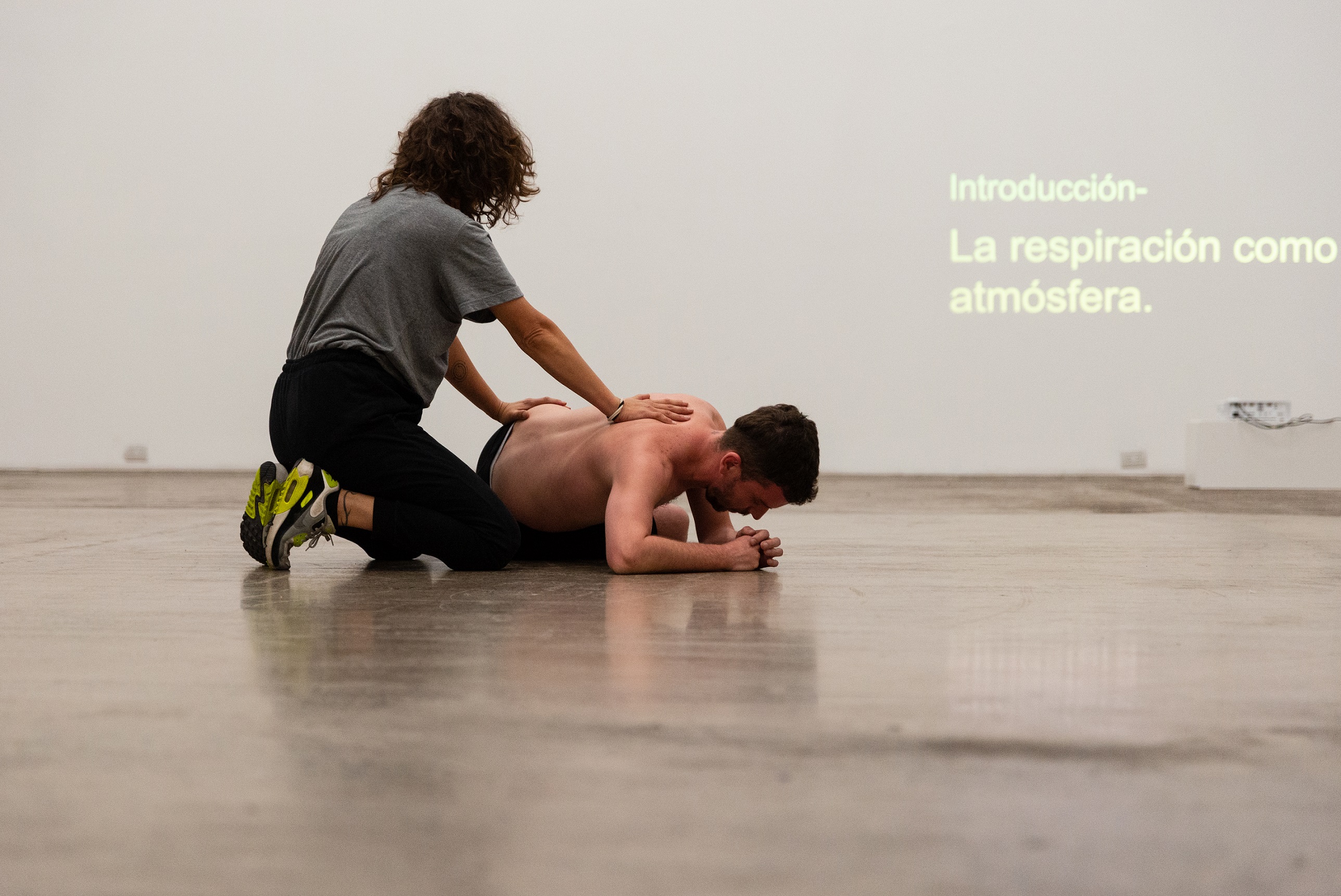


Procedures
One of the procedures that make the most sense in my work is to think in terms of images. What is it that mobilizes an image? What multiplicity of layers can I remove from this concrete material? In a way, it is the need to start from something rather fixed in order to set it in motion, noticing the possibility of recovering its associations, disparities, mismatches, affectations or approaches—a great atlas of references.
Dialogues
I find it very stimulating to think with others. I find it quite challenging to let go of my obsessions in order to dismantle them and incorporate other ways of approaching the same thing. The real task in the collectivization of projects is to be able to reconfigure the methodologies that one uses and to strengthen listening as an affective dimension for the development of what is common. The creation of projects is a collective affair. In this setting of action, another always plays a transcendent role.
Projects
In progress
I am currently working on two projects simultaneously: on the one hand, to give continuity to *El Asunto de lo Remoto*, a cycle I created in 2018 and which I am currently co-directing with Alina Marinelli and Damiana Poggi. Within this framework, in this year's IV edition, we want to accompany, together with the Casa Nacional del Bicentenario, the projects in residence selected through an open call in 2022. To this end, we want to provide a space for collaboration and co-projection with NAVE of Chile and PAR Uruguay, two great allies that allow us to continue weaving networks of collaboration and support in our southern region. In 2021 *El Asunto de lo Remoto* held its II edition occupying the spaces of different institutions in the city of Buenos Aires and in a vacant lot in the neighborhood of La Boca where CAVAR was held, a performance by the collective Jardines Subterráneos —integrated by Laura Kalauz, Elina Rodríguez, Marina Quesada and Cecilia Blanco— artists who work in the field of the expanded scene, carrying out projects that combine art, environment and politics. CAVAR proposes a collective gesture with the audience and thus opens a space to fabricate ways of inhabiting the city. This performance is part of a broader investigation that Jardines Subterráneos is developing on the terrain of the city: *Ni tierra ni agua* (Neither land nor water). Through the questions and the map of geo-references it enables, it allows us to observe beyond the terrain of what is visible in the ecosystems we inhabit. Throughout its drift it emerges to the public sphere in different formats, images, actions, readings, videos, laboratories that currently constitute a great guide in my professional practice. For the year 2024, together with the artist Adriana Bustos, we are working on an exhibition for the Contemporary Art Center of MUNTREF, which is nurtured and takes as a theoretical framework certain premises and hypotheses of the research of Jardines Subterráneos, great inspiration for the development of this work. It projects its inauguration for the month of April 2024: a journey, a path, an escape that becomes visible by focusing on the subway streams of the city of Buenos Aires and the link that exists between the idea of "conquest" and "discovery."
"Exploring, cataloging and reinventing the biodiversity of the territory." How to re-build the cartographic imagery beyond the human temporal logics? (Jardines Subterráneos — Marina Quesada, Elina Rodriguez, Laura Kalauz, Cecilia Blanco, "CAVAR", 2021—2024).
In retrospect
My time in the educational field in institutions such as the Parque de la Memoria or the Museo de Arte Moderno de Buenos Aires were projects of constant learning. The connection with different audiences and the development and implementation of different workshops for a wide community have developed in me a fruitful field of action to work on the inclusion of new audiences and subjectivities in a concrete connection with contemporary art and human rights.
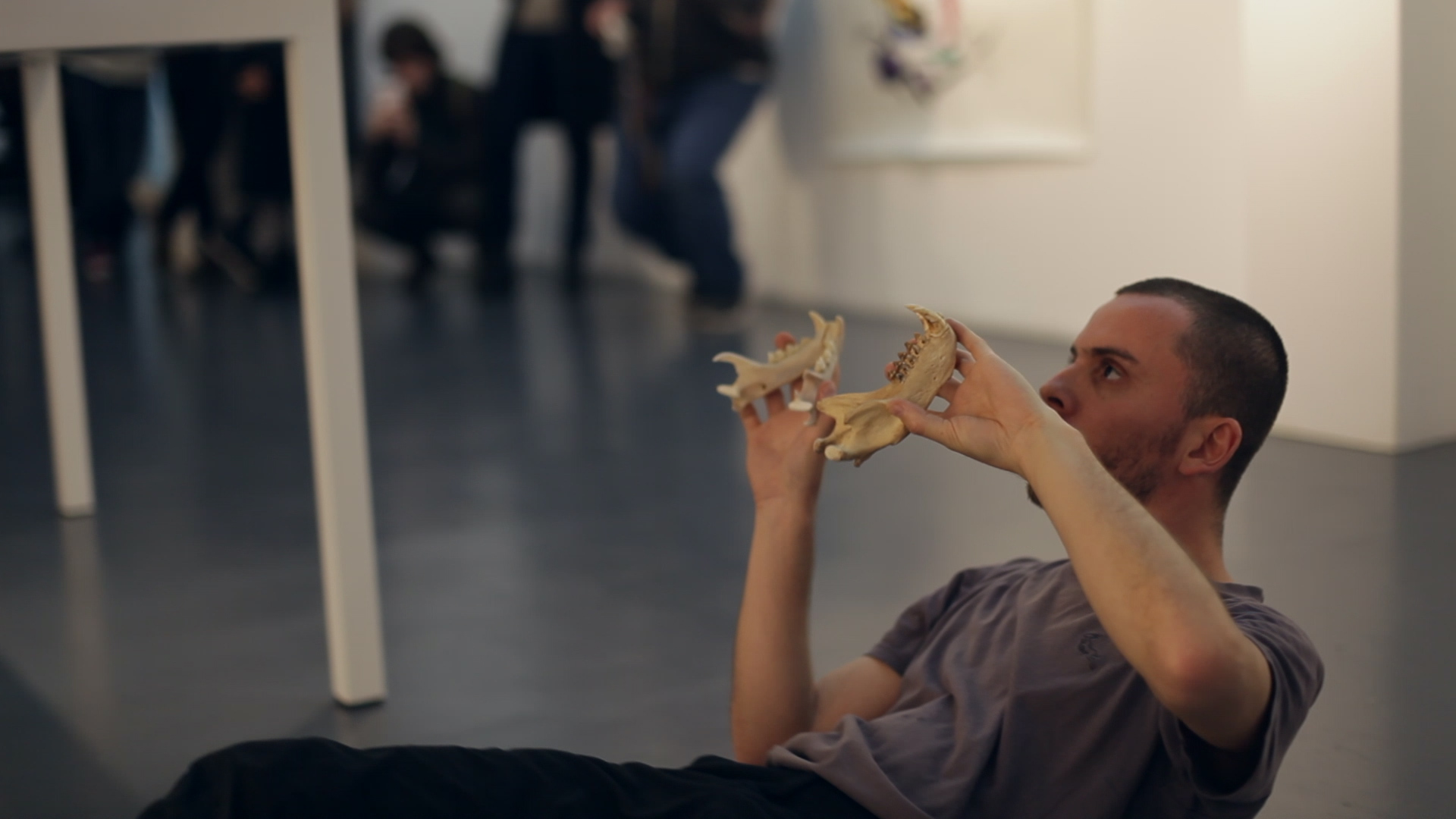

Context
I cannot consider a project without a reference to the context in which it is developed. This criterion is in line with what has been said above. The context allows the possibility of questioning the choices that I then put into practice. The immediate context is the conversation with friends or colleagues, the transit through a certain territory, the global crisis that is becoming more acute (and stronger).
It is the resistance of various movements and organizations. In short, it is the collective thinking and organizing that moves forward even in the most difficult and inconvenient moments. Everything that challenges me is what stimulates and moves my practice. All places where it is necessary to point out (or invent) something.
